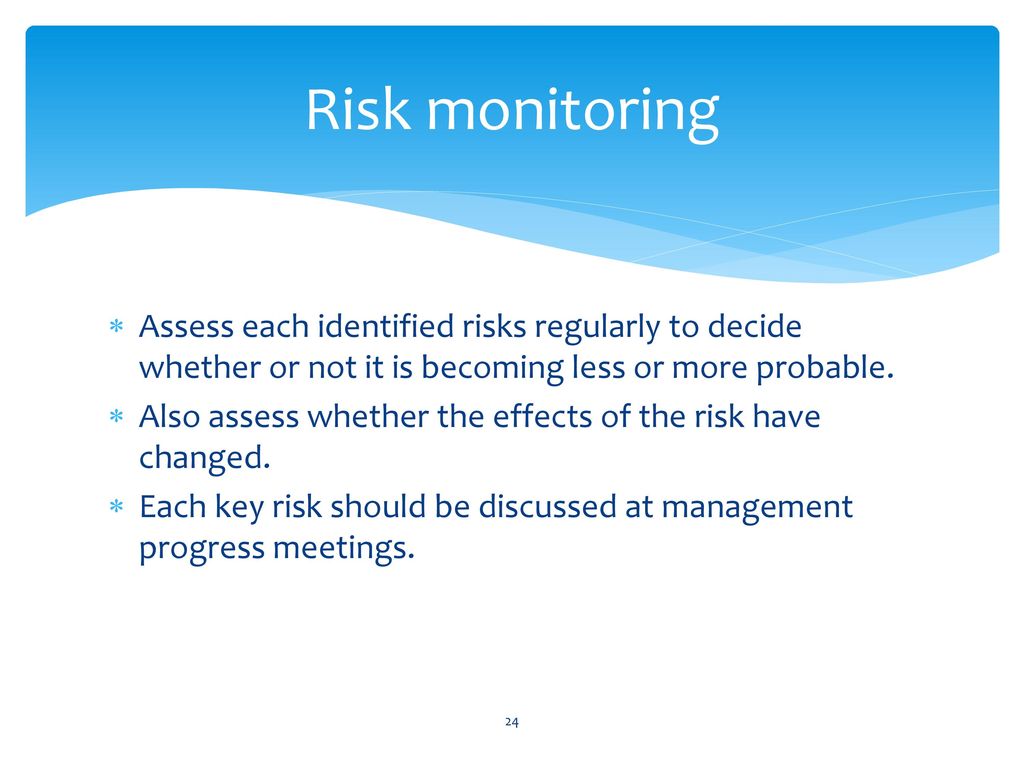An Art of Hazard Management: Perspectives that Matter
In today's rapid and uncertain world, the ability to handle risks is not just a need but an essential skill. Businesses and people alike are regularly faced with uncertainties that can impact their achievement and welfare. Understanding and managing these uncertainties effectively is crucial, making understanding of risks an invaluable aspect of planning strategies. By leveraging risk monithoring and analysis, businesses can spot possible risks, assess their chance, and implement strategies to lessen their consequences.
Risk monitoring is situated at the core of this process, allowing for the constant evaluation of the evolving risk landscape. As fresh obstacles arise, having a solid system to track and assess risks facilitates decision-makers to react quickly and stay strong. This adaptive approach to managing risks enables stakeholders to make educated decisions, ensuring that they not only survive but thrive in an continuously shifting setting. Accepting the practice of the management of risks can ultimately lead to increased security and growth, both personally and in one's career.
Grasping Risk Perceptions
Risk perceptions function as a basis for successful decision processes in any organization. These insights help identify likely dangers and prospects by assessing information and patterns that may influence the overall risk landscape. Understanding risk perceptions entails acknowledging the causes of risk, whether they originate from financial fluctuations, compliance changes, or operational challenges. This awareness empowers businesses to be anticipatory rather than defensive, fostering a culture of informed decisions.
At the heart of risk perceptions is the value of regular risk monitoring. Organizations must establish effective systems that enable them to monitor and assess risks in real time. By using tools and technologies that obtain pertinent data, businesses can spot early warning signs of emerging risks. This ongoing monitoring improves an organization's ability to modify strategies, assign resources competently, and formulate alternative plans.
Furthermore, successful risk perceptions demand cooperation among various departments. By consolidating insights from finance, operations, and compliance, companies can obtain a holistic understanding of risks. This joint approach not only enhances the caliber of insights but also matches risk control efforts with overall business goals. In the end, fostering a culture of shared responsibility for risk can lead to more robust organizations that can handle an volatile environment.
Successful Risk Management Techniques
Monitoring risks efficiently is crucial for companies to remain prepared for emerging threats. An valuable technique is the use of KRIs. Such metrics offer early signs of increasing risk and enable organizations to evaluate their risk exposure over periods. By creating a set of relevant KRIs adapted to particular business functions, firms can gain a clearer understanding of their risk environment and make educated decisions.

An additional technique includes regular risk assessments that adapt to evolving circumstances. This entails conducting assessments both on a regularly basis as well whenever there are significant developments in the business, like expanding into new markets or introducing new products. Integrating feedback loops can enhance this process, enabling teams to reexamine risks in view of recent information and adapt their mitigation strategies as needed.
Finally, utilizing technology for real-time monitoring is becoming ever essential. A lot of organizations are employing advanced analytics tools and software to oversee risk factors in real-time. These solutions can compile data from various sources, assess trends, and generate alerts when risks exceed established thresholds. By implementing technology in risk monitoring, firms can ensure a proactive approach to managing risks and protecting their objectives.
Strategic Choices in Risk Mitigation
Effective risk management is intimately linked with strategic decision processes processes. Companies must prioritize understanding and incorporating risk information into their strategic frameworks to make well-informed choices. This entails analyzing potential threats and opportunities while aligning them with the company's goals. By fostering a culture that prioritizes risk awareness, executives can better assess consequences and manage uncertainties, leading to more robust strategies that drive sustainable success.
Central to this approach is the practice of constant risk monitoring. By regularly reviewing risk signals and patterns, organizations can identify shifts that may affect their operational objectives. Through effective monitoring, businesses can be anticipatory rather than reactive, allowing them to adjust their strategies in real-time. This flexibility not only assists in reducing risks but also allows organizations to take advantage of opportunities that may arise from changing market dynamics.
Lastly, collaboration amongst teams is essential in improving strategic decisions in risk management. By encouraging clear communication between teams, organizations can gather diverse insights that enrich the understanding of risk across different perspectives. This collective intelligence can lead to more comprehensive strategies that account for complex risks, enhancing the company's resilience. As a result, well-informed decisions become a valuable asset in navigating the complexities of the business landscape.